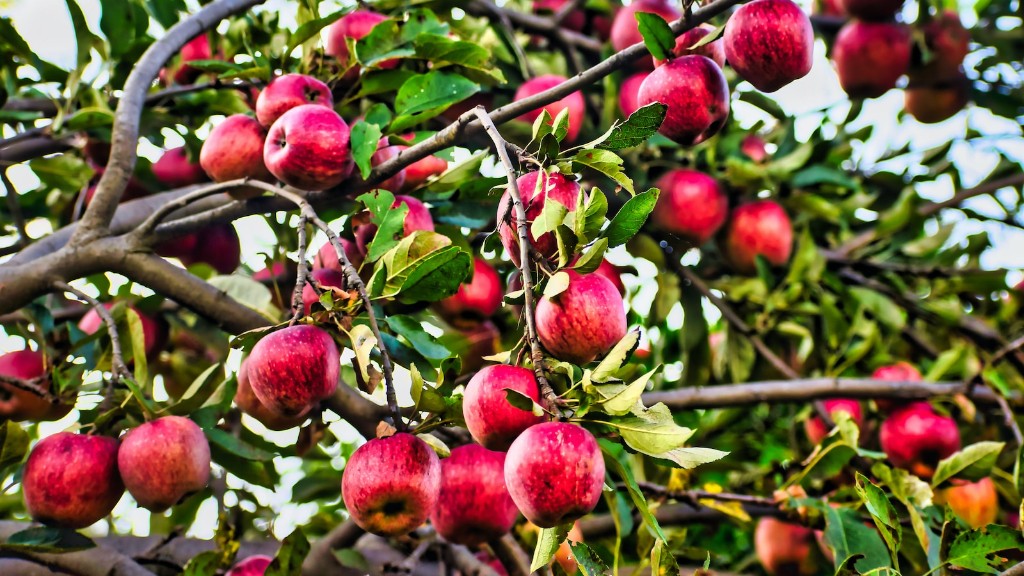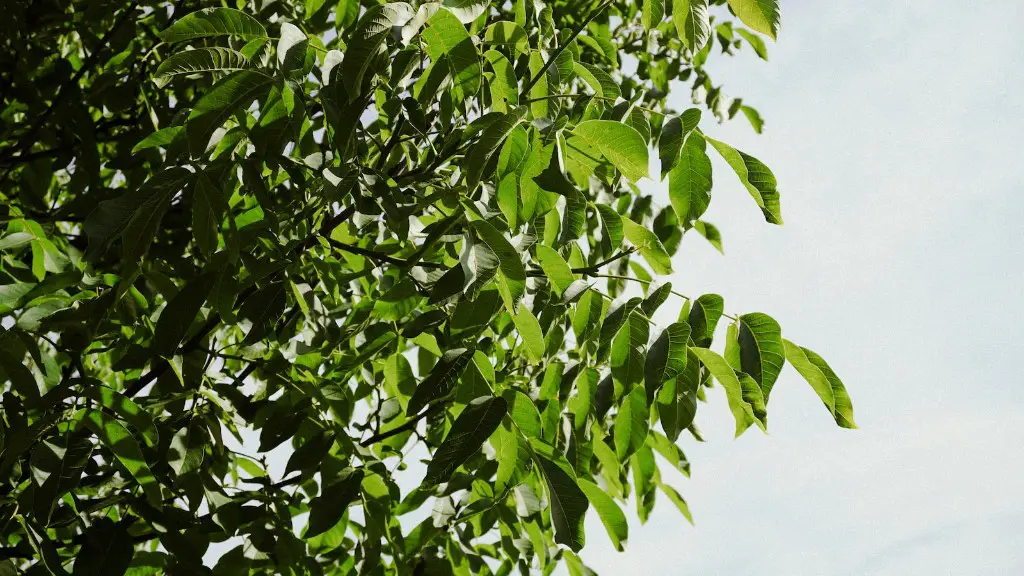Apple trees are popular choices for many homeowners and gardeners who want to grow tasty fruit and create a beautiful, shade-giving foliage. While apples have a few needs in order to stay healthy, pruning is one of the more important aspects of caring for them.
Learning the correct way to prune your apple trees can help ensure that your fruit is fresher, sweeter, and heartier. Pruning can also make them more resilient to disease, and it will keep your orchard in great condition.
Spring is a great time to prune an apple tree, as it takes advantage of the dormancy period of the tree, before spring growth begins. Pruning in the spring helps to create a strong and open structure, allowing light and air circulation to the interior of the tree, while encouraging strong regrowth and limiting overcrowding.
When pruning an apple tree in the spring, you should focus on the branches that are causing crowding, undercut canopies, and take away dead, diseased, and crossing branches. Removing excess fruit can also help with thinning, as it will make sure each apple is getting the nutrients it needs from the tree.
It is important to keep in mind that pruning cuts should always be done in the direction of the new growth you want to encourage, which is typically going away from the trunk. This helps promote horizontal branching, instead of long vertical growth and strengthens the tree.
In order to keep your apple tree healthy and productive, you should prune yearly in the spring, though this may very from one climate to the next. Depending on the size of the tree, it may require a more extensive pruning every couple of years.
Basic Pruning Techniques for Apple Trees
Apple trees should be pruned to keep them healthy and vigorous. Gently trim branches that are overcrowded, dead, or damaged, thinly slicing them with a pruning saw or shears. Begin by cutting off any crossing branches, as these may damage the tree as it grows. Apple trees should also be pruned to promote good air circulation, and to make sure that sunlight can reach all of the branches, as this will help with pollination and increasing productivity.
When pruning an apple tree, you should also keep in mind that not all branches will produce fruit. Some branches may be better suited for providing shade and shelter, so they should be left alone. Pruning too aggressively can lead to dieback and weak regrowth, so you should be careful not to overdo it.
In addition, you should use sharp, well-maintained pruning tools to help protect the tree from damage. These should also be properly cleaned before and after use in order to prevent the spread of disease.
It is also important to be careful when removing large branches from the tree. It is best to do this when the tree is in its dormant stage in the winter, as it will have the highest cold hardiness and will be better able to recover. When removing large branches, use the three-cut method to prevent bark from tearing.
Fruit Thinning for Apple Trees
Fruit thinning is an important task when it comes to caring for apple trees. It is essential for keeping the tree healthy, promoting growth and allowing the remaining fruit to properly ripen. Thinning helps to reduce the amount of fruit that a tree will produce, allowing the tree to focus its energy on a smaller number of apples.
When thinning, aim to keep the apples evenly spaced along the branch and leave no less than 3 to 6 inches between each piece of fruit. Thinning should be done when the fruit is about the size of a small marble and can be done either by hand or with a pruning saw.
When done correctly, fruit thinning will help reduce the risk of limb breakage, as the tree will not be weighed down by too much fruit, and it will also help reduce the spread of certain diseases. It will also help you control the size of the apples on the tree, as large apples are more prone to certain pests and diseases.
In addition, thinning will reduce the chances of having small, misshapen fruit, as well as reducing the competition between the apples for nutrients and light. This will help your apples become bigger and juicier, giving you the best quality fruit.
Proper Pruning for Shaping the Tree
Apple trees should also be pruned to keep them aesthetically pleasing and control their height and spread. Pruning for shape can help improve their ability to withstand strong winds and will provide a pleasant scenery in your orchard or garden.
When pruning for shape, prune branches back to the main branch or trunk, keeping the overall shape of the tree in mind. Always make sure to remove as few branches as possible to maintain the desired shape, and to make sure that the branch is cut at the right angle. This will help promote vigorous regrowth of the entire tree.
Pruning for shape should also be done carefully and slowly. Start by trimming off small branches, and then gradually prune the tree back to its desired size and shape. You should also keep in mind that removing too much can cause the tree to become weak and misshapen, so take your time and don’t remove too much.
In addition, removing diseased, dead and crossing branches can create breathing room and light to the interior, which will help shape the tree, as well as encourage strong regrowth. Targets for pruning should be those that have started to rub against each other, or crowd each other out.
Renovative Pruning for Apple Trees
Apple trees should also be pruned for renovative purposes. If you’re dealing with an older, overgrown tree that had not been shaded correctly in the past, it may require a more extensive pruning from time to time.
The goal of renovative pruning is to open up the canopy to light and air circulation, while promoting strong regrowth. When renovatively pruning a tree, you should start by removing dead, diseased and crossing branches, as well as any invaded by pests. Then, you can slowly and carefully take away the excess branches, thinning the canopy, allowing light and air to penetrate the branches and creating a more open structure.
When renovatively pruning an apple tree, it is important to not remove too much of the tree. Cut back only what is necessary, and make sure to leave enough upper branches, as they will be responsible for providing the most light and air circulation.
In addition, it is important to use the three-pronged cut when removing large branches. This will help prevent the bark from tearing, and will allow for a cleaner, more even cut.
Pruning for Protection from Storms
Apple trees may also require protection from strong winds and storms. This can be achieved by pruning the tree in a way that creates a balanced structure, whereby all the branches are evenly supported and can resist the force of the wind.
When pruning an apple tree for storm protection, you should remove any branches that are broken, hanging down, or damaged by storms. The remaining branches should be pruned to keep their shape and be evenly distributed, while large branches should be cut into thinner pieces.
It also helps to create an open canopy with plenty of light and air. This will prevent strong winds from causing too much damage, while protecting the tree from diseases and pests.
In addition, it is important to remove any branches that are growing towards the center of the tree or towards its base. This allows for better circulation and will help the tree stay healthy and strong.
Pruning apple trees in the spring is a great way to ensure that your orchard will remain healthy, productive and beautiful for years to come. Pruning should concentrate on removing overcrowded and dead branches, while thinning and shaping the structure of the tree. This simple care can help bring the best out of your apple trees.





